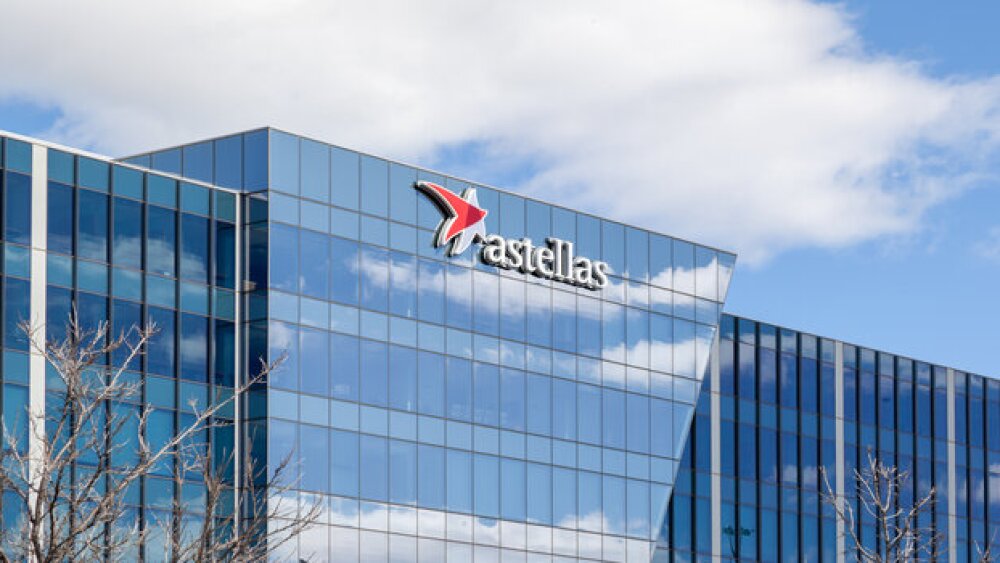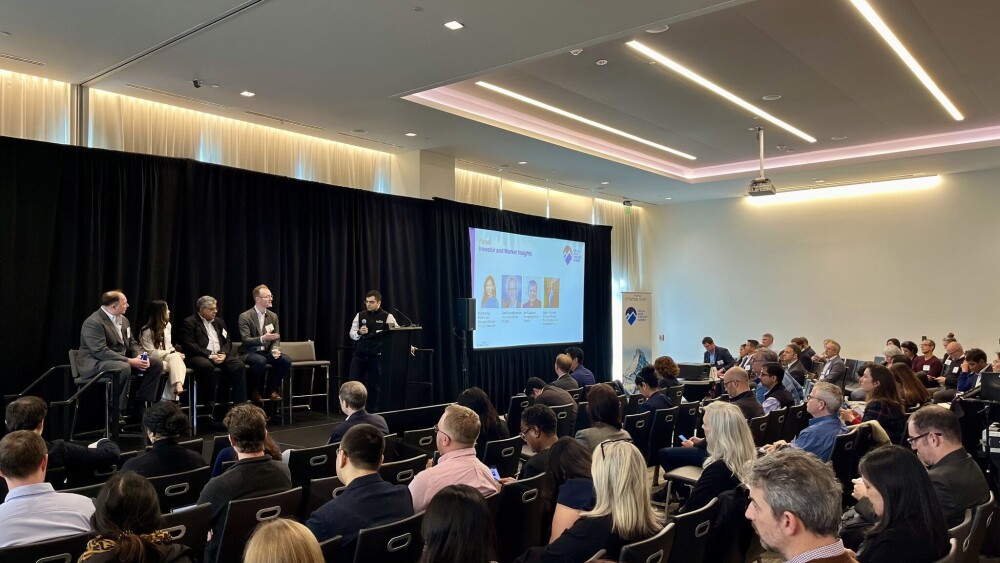Friday, Iveric Bio scored a regulatory win for its geographic atrophy eye injection Izervay, just three months after the New Jersey biotech was bought by Astellas Pharma for $5.9 billion.
Pictured: Astellas’ American headquarters in Illinois/iStock, JHVEPhoto
The FDA on Friday approved Iveric Bio’s intravitreal avacincaptad pegol, now to be marketed as Izervay, for the treatment of geographic atrophy secondary to age-related macular degeneration.
The regulatory win comes three months after the New Jersey biotech was bought by Astellas Pharma for $5.9 billion. The companies completed the acquisition last month.
Friday’s approval makes Izervay the first authorized geographic atrophy (GA) treatment that has significantly slowed down GA progression at 12 months across two Phase III studies, according to Astellas’ announcement. The eye injection also offers a new treatment option to physicians and patients across the U.S., Iveric Bio President Pravin Dugel said in a statement.
Discovered and developed by Iveric, Izervay is an intravitreally administered inhibitor of the complement C5 protein. By blocking the cleavage of C5, the eye injection also disrupts more downstream processes, including the formation of the membrane attack complex and inflammasome, which in turn gives rise to the hallmark symptoms of GA.
Iveric tested the therapeutic potential of Izervay’s mechanism of action in the Phase III GATHER1 and GATHER2 trials. GATHER1, a prospective, randomized and sham-controlled pivotal Phase II/III trial, showed that at the 2-mg dose level Izervay slowed GA growth by 27.4% over 12 months, while the 4-mg dose was slightly more effective at 27.8%. Both dose levels were statistically superior than sham.
The company followed this data up in September 2022, announcing that topline data from the Phase III GATHER2 study had met its prespecified primary endpoint. At 12 months, patients treated with Izervay also saw significantly slower growth in GA area, as compared with sham controls.
In both studies, Izervay also had a tolerable safety profile. Across the GATHER program, bleeding beneath the clear lining of the eye was the most common side effect observed in patients treated with Izervay, followed by increased intraocular pressure and blurred vision.
Izervay’s label reflects this safety profile and carries precautions against retinal detachment, an increase in intraocular pressure, neovascular age-related macular degeneration (AMD) and eye infections. Izervay does not have come with a boxed warning.
Astellas and Iveric expect Izervay to be available in two to four weeks, hitting U.S. shelves approximately six months after its main competitor, Apellis’ Syfovre (pegcetacoplan), was approved by the FDA.
Both treatments are intravitreally administered and work by disrupting the complement cascade to slow lesion growth. Neither, however, have yet been shown to elicit significant benefits on visual function.
Tristan Manalac is an independent science writer based in Metro Manila, Philippines. He can be reached at tristan@tristanmanalac.com or tristan.manalac@biospace.com.






